We back-to-back test Honda intake combos to learn how significant subtle changes can be
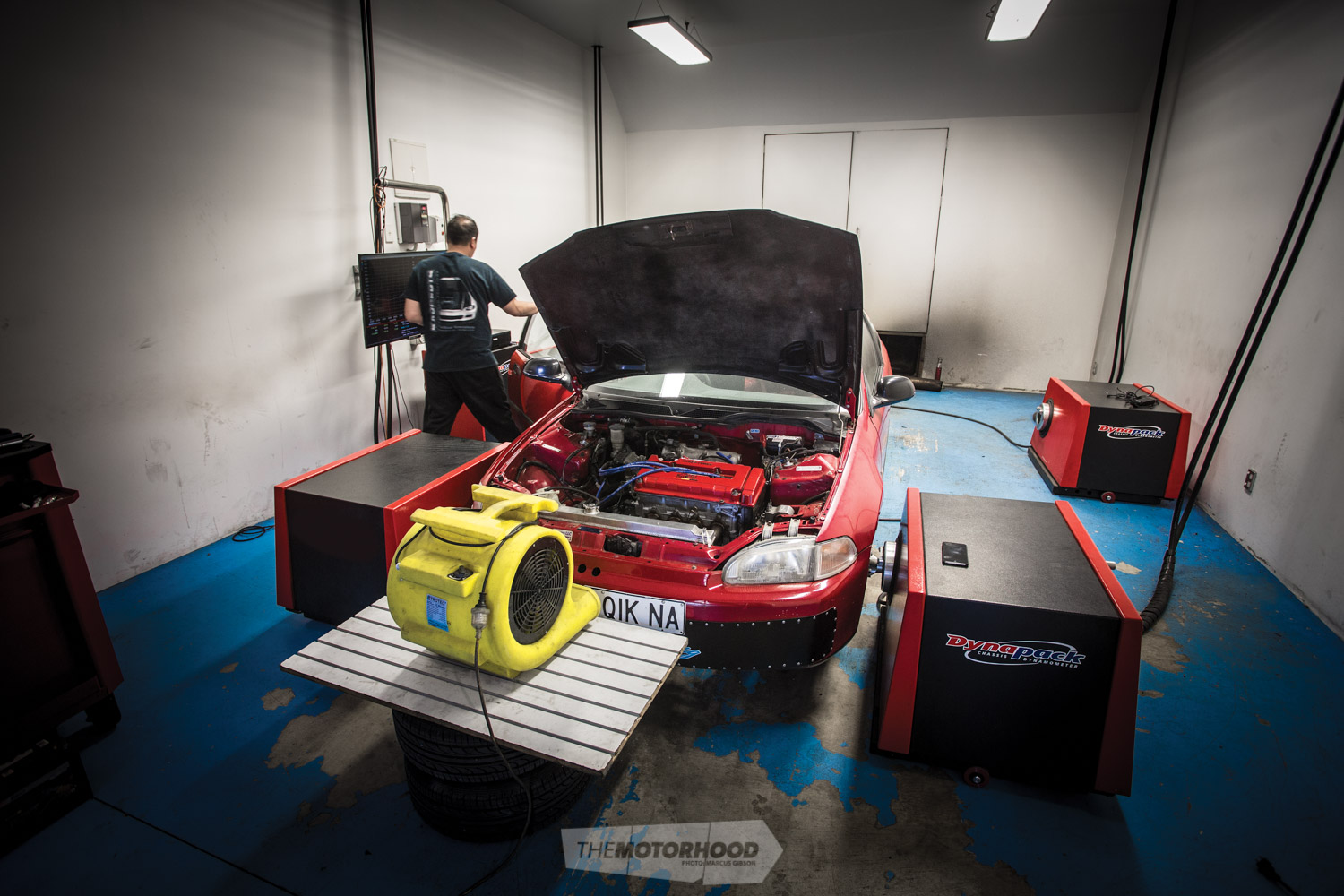
One of the simplest DIY performance modifications that the average car person will carry out is the removal of the factory air box in order to add a pod filter, or cold-air intake. Sure, that will net a significant induction-noise increase, but there is much more at play in the intake than you may realize — and that so-called performance upgrade might not be an upgrade at all.
To find the answer to what works and what doesn’t, we locked ourselves in the dyno booth at Jtune with Mr Jtune himself, Jackie Tse, a Honda whisperer who has spent 20 years seeking to squeeze every last kilowatt from naturally aspirated motors.
Our test mule for the day was a B16A-equipped EG Civic, which was headed to the drag strip, so the owner was after all-out top-end performance. But, for the sake of this test, we would also look at making power elsewhere in the rev range. The engine is a rebuilt factory B16A, with EK9 Type R head, bigger-duration cams, stronger valve springs, narrow-neck intake valves, and factory tidied ports. The intake manifold is a stock Type R unit, and the exhaust consists of four-into-one headers and a 2.5-inch exhaust. Both the power steering and AC pumps have been removed to help the motor spin.
Our tests were conducted back-to-back, with the water and intake temps both logged to ensure accuracy. We didn’t even turn the motor off while swapping intakes over. We looked at length, volume, and entry point (i.e., pod filter or bellmouth).
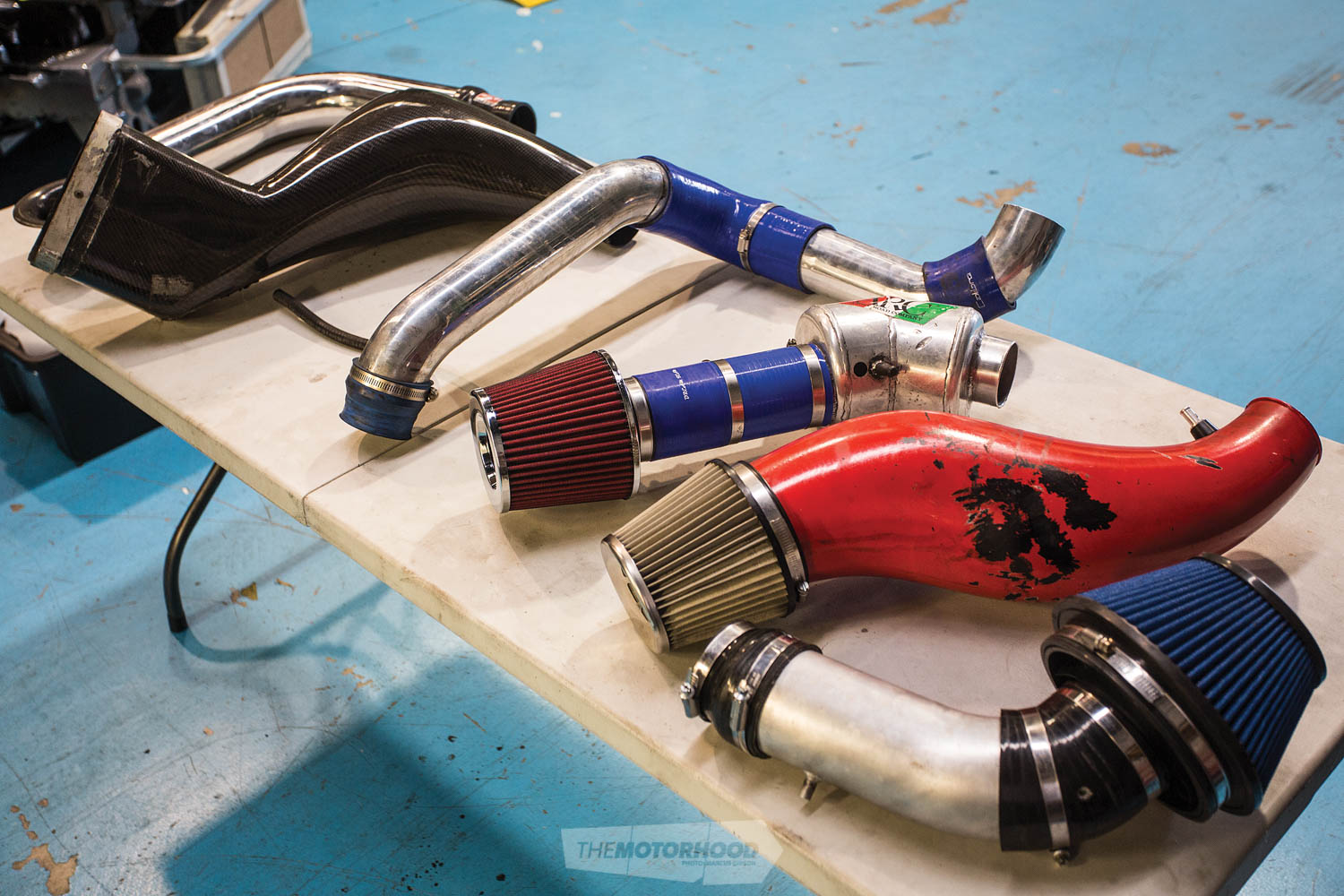
Before we delve into what we found, first it’s time to get all sciencey to understand why there will be any changes. What it all boils down to are the harmonic frequencies produced by a motor. The harmonics of your engine come in waves (at different rpm) that will cause air to travel up and down your intake track from the inlet to the backside of the intake valve. What we are trying to do is tune the intake length so that air is loaded onto the backside of the inlet valve at the time of opening. If this timing is out, it can have the opposite effect and pull air from the combustion chamber.
The higher the rpm, the stronger the harmonics, and you will want to focus on the harmonic that happens around the rpm your engine was built for. If everything is built to make peak power at 8000rpm, as it is with this Honda, then you will deal in the second harmonic and want that wave to hit right in the peak power window. If the car is, say, a lower-revving V8, you would work to the third harmonic, and so on. You really don’t want to rev a car harder than you need to.
The length and volume of the intake will affect at what rpm the harmonic happens. The shorter the intake length is, the higher in the rpm range each wave of harmonics will occur. In the next column, there’s a comparison between a 508mm (20-inch) and 381mm (15-inch) intakes to give you an idea of the effect a 127mm (five-inch) change in lenght will have.
20-inch intake runner length
- Second harmonic, rev range is from 5874rpm to 7128rpm, with a pulse strength of 10 per cent
- Third harmonic, rev range is from 4414rpm to 5044rpm, with a pulse strength of seven per cent
- Fourth harmonic, rev range is from 3441rpm to 3848rpm, with a pulse strength of four per cent
15-inch intake runner length
- Second harmonic, rev range is from 7832rpm to 9504rpm, with a pulse strength of 10 per cent
- Third harmonic, rev range is from 5885rpm to 6725rpm, with a pulse strength of seven per cent
- Fourth harmonic, rev range is from 4588rpm to 5131rpm, with a pulse strength of four per cent
With five inches difference, you can see that with the longer runner length we reach the second harmonic at a lower rpm. But there is no one-size-fits-all recipe; all your engine variables will affect your outcome. What we’re aiming to do is point you in the right direction with your engine combo — Honda or otherwise, worked or factory. Which is why our test includes many different shapes and sizes tested.
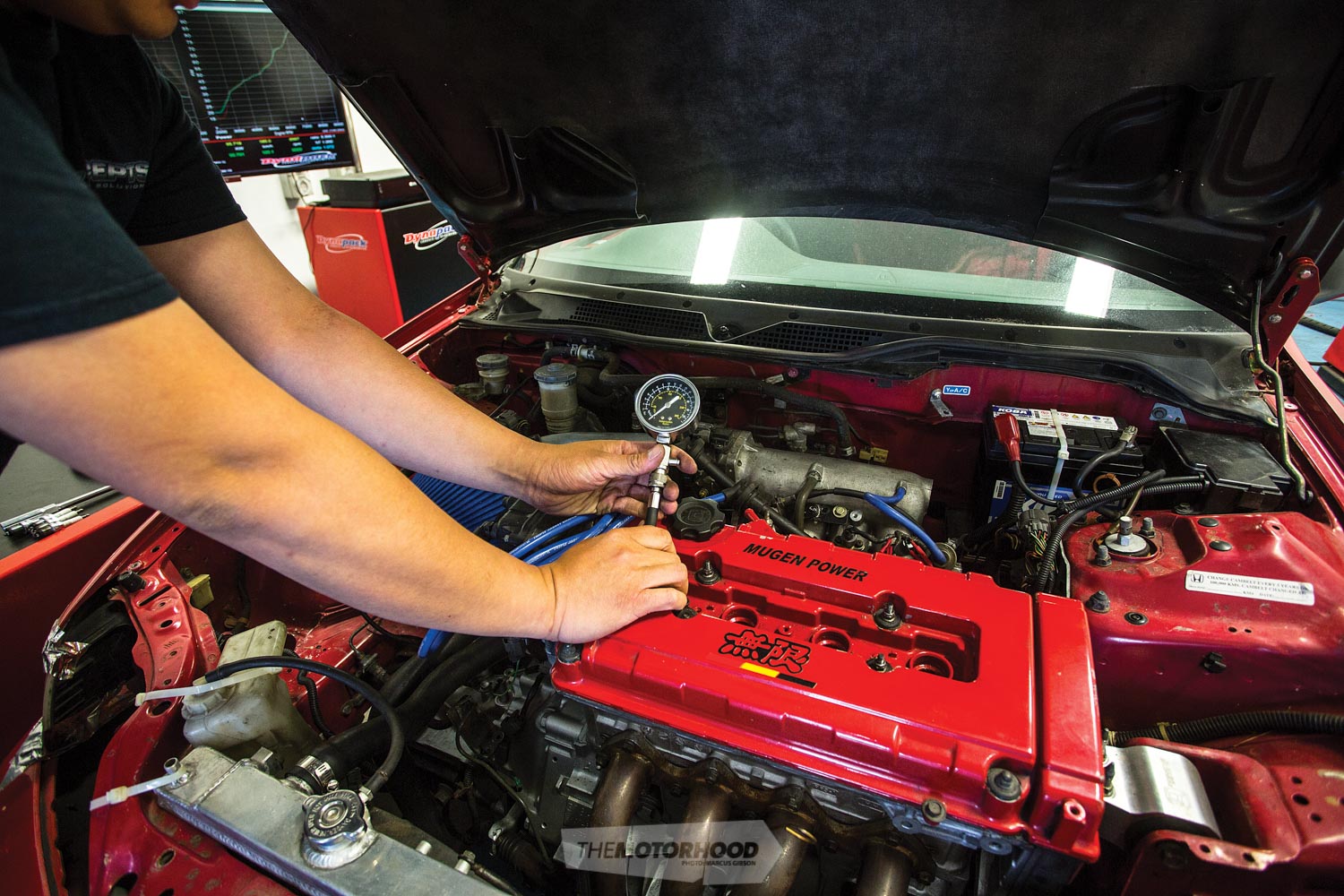
Enough with the theory. Let’s get down to putting it all into practice. According to Jacky, as we alter the intake piping, the rpm at which we pick up power will change. At this point, the air-fuel mixture will ‘turn’ or ‘jump lean’, which indicates that at that rev point the engine is running more efficiently. Throughout the test, we didn’t change the map to optimize any one combination. Jacky went back after we found the optimum set-up, and tuned to suit.
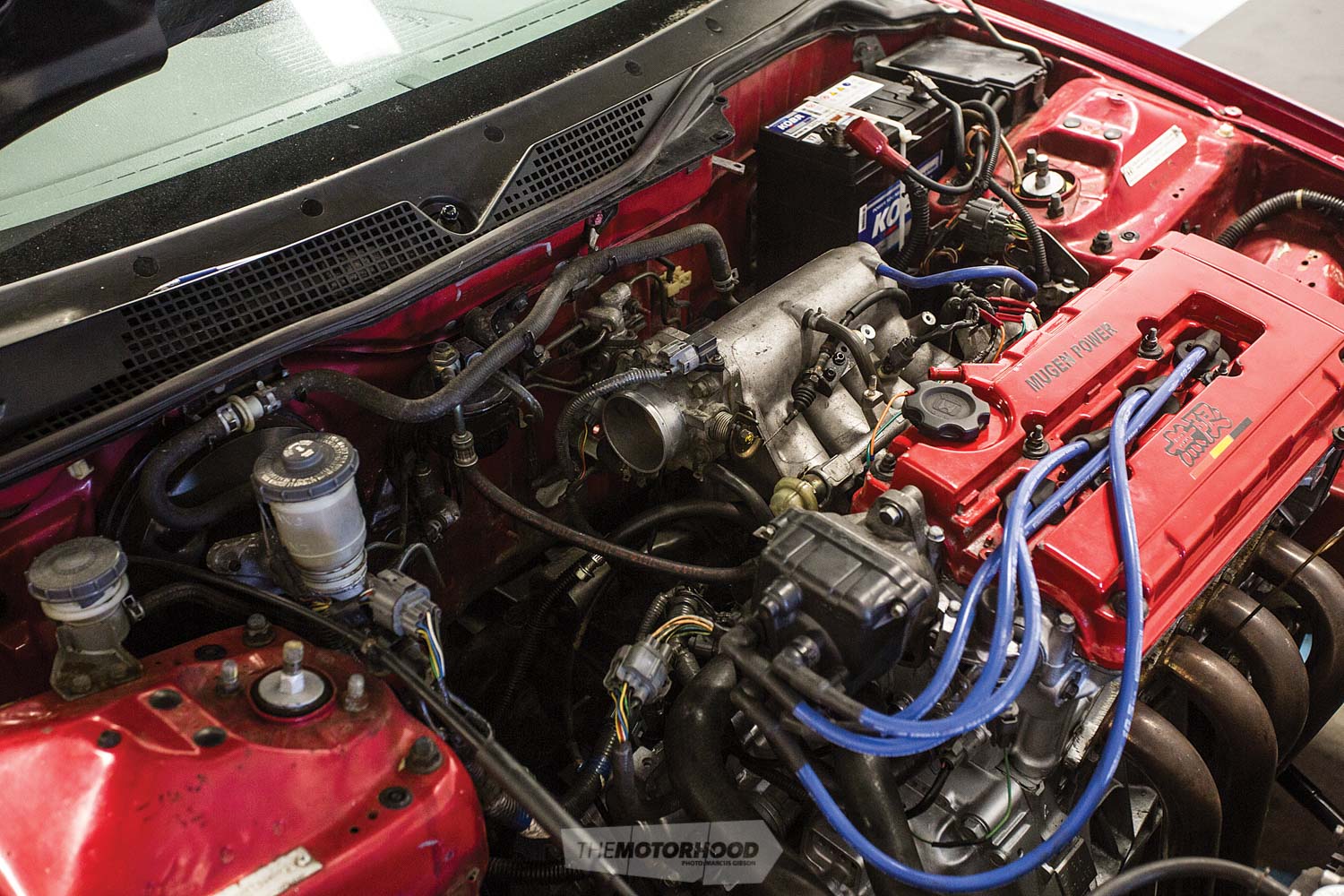
Test One: Nothing
We started by removing the intake altogether and running straight off the throttle body. This saw the base power figure set at 99.97kW and 117.4Nm at 7338rpm.
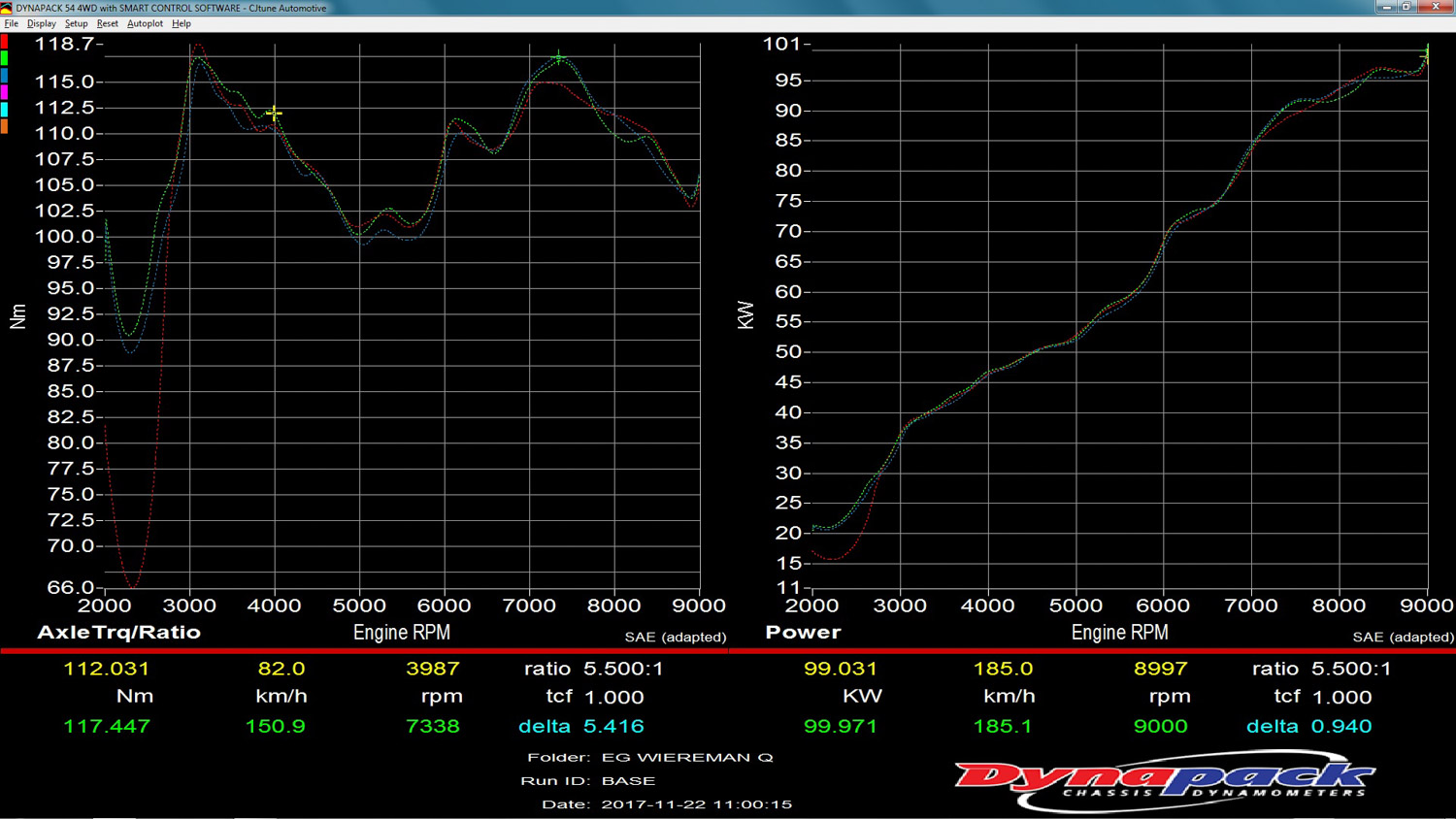
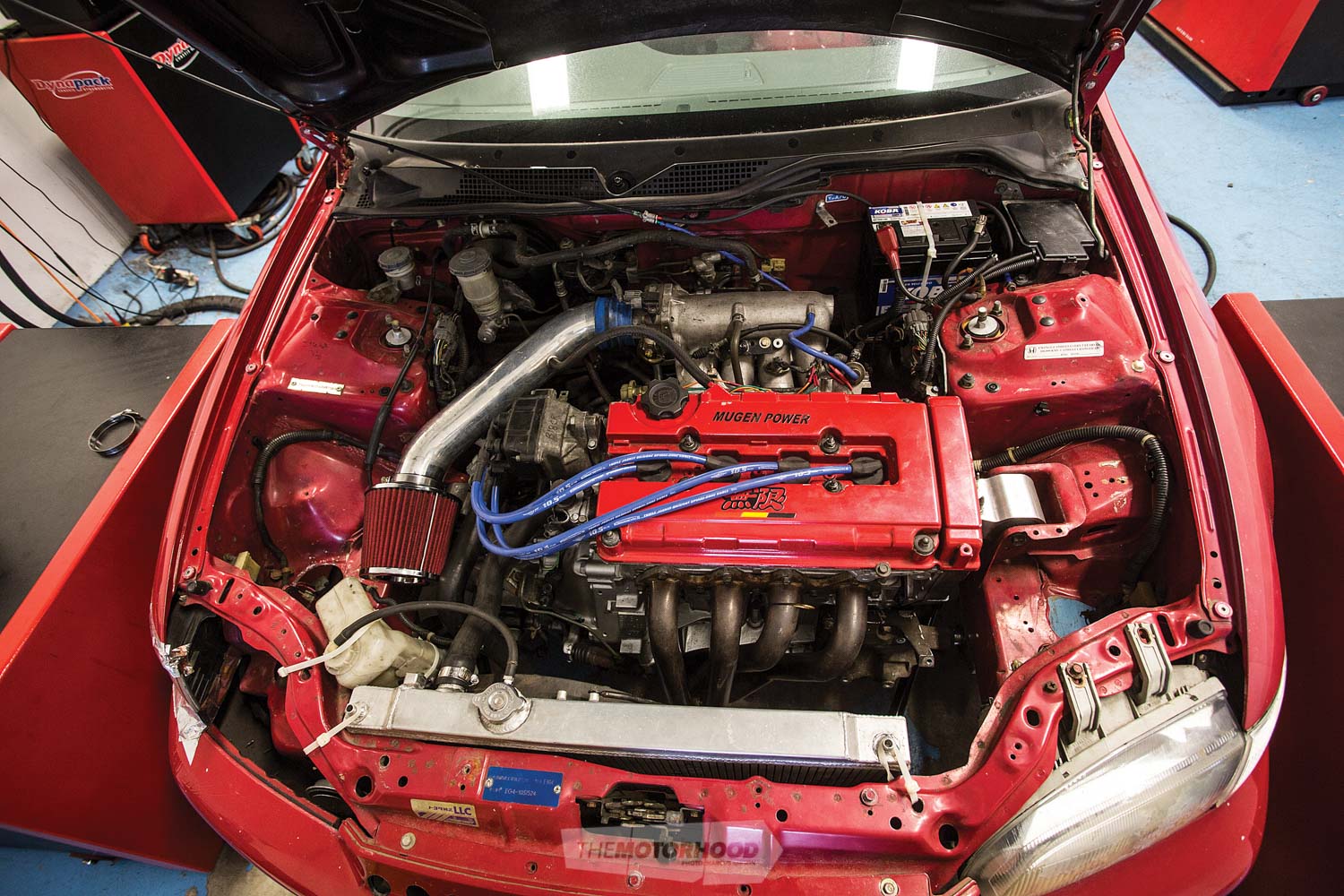
Test Two:
500mm long three-inch intake with pod filter
95.88kW/116.4Nm at 7269rpm
“This is the common Honda intake you’ll find. Average peak power and the torque curve has moved back 500rpm, as well as average mid-range torque.”
Test Three:
500mm long three-inch intake with bellmouth
101.41kW/118.02Nm
“Significant power increase from 7000rpm and leaned the engine out from 5500rpm upwards.”
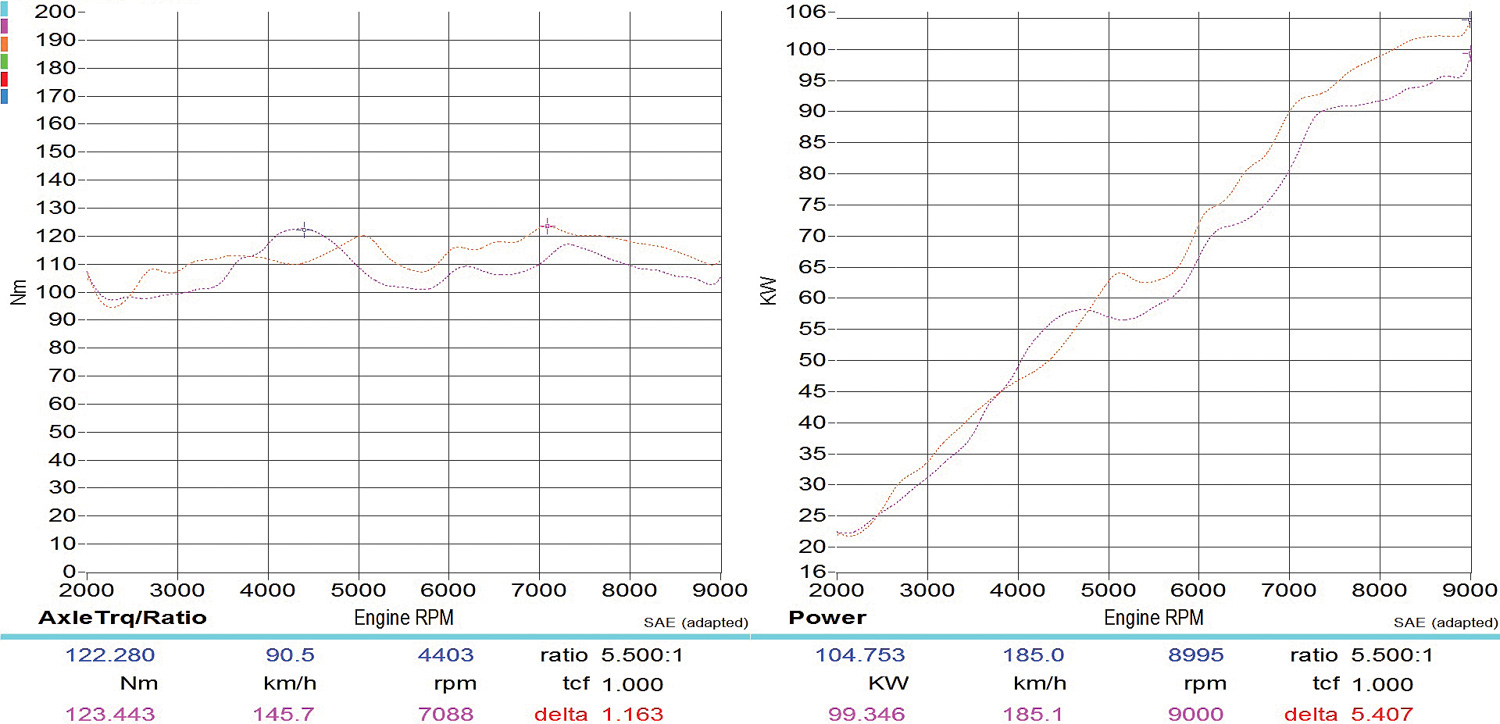
Test Four:
Super-long three-inch intake with pod filter (aka cold-air intake)
104.75kW/122.28Nm at 4403rpm
“With good overall, good mid-range, and good down-low increases due to air speed, this is why the cold-air intake system is a common upgrade for the Honda B Series. Not only does it get fed cold air, [but also] the length is perfect when in three-inch.”
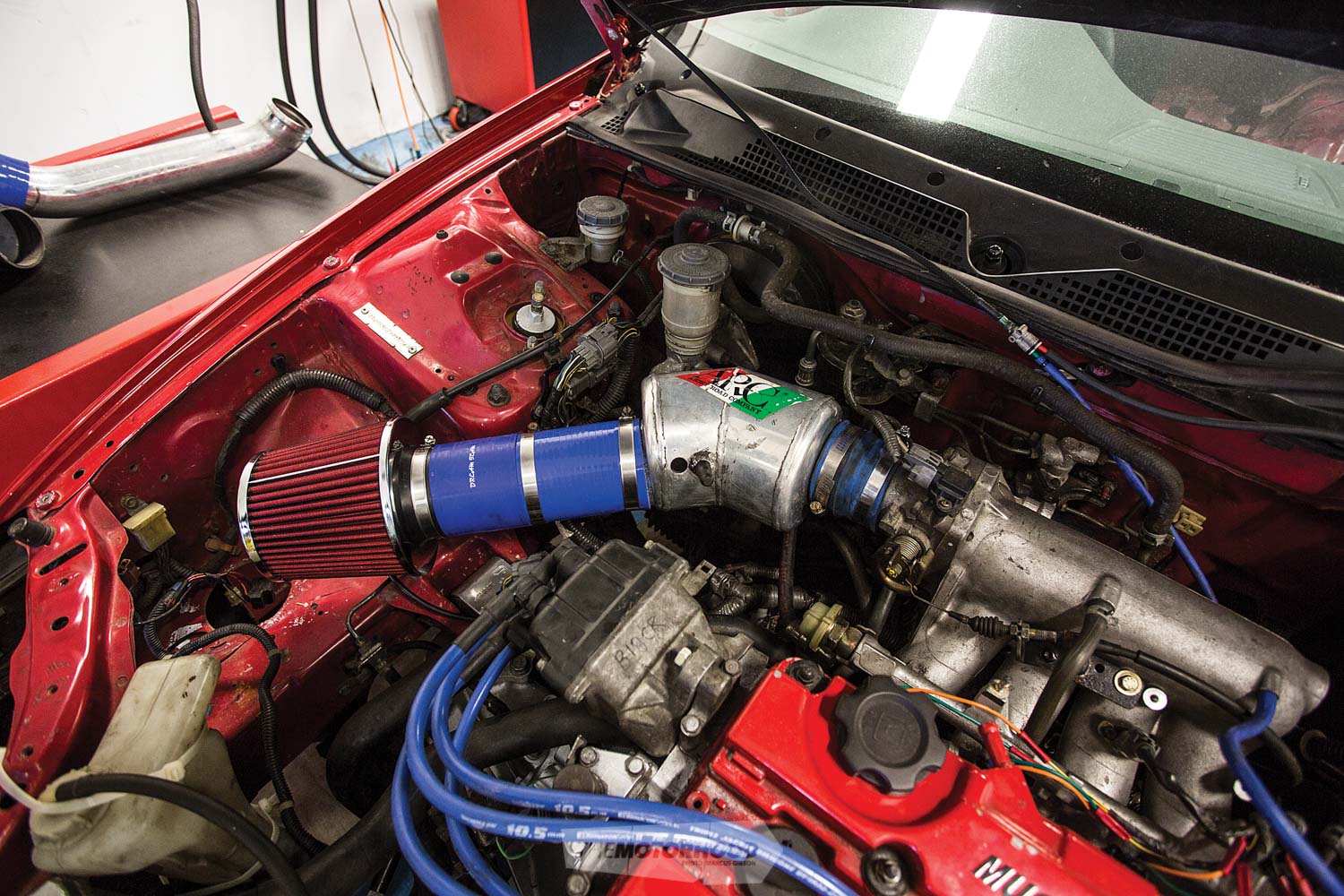
Test Five:
Short three-inch intake
with ARC expansion chamber
97.15kW/121.37Nm at 6596rpm
“As we can see, this unit really killed the top end. But the power we gained in the mid range was up to 13kW. This is a better performer than the whale penis [see Test Seven], but, due to the design, it’s creating turbulence very close to the throttle body, which slows air speed and costs us top-end power.”
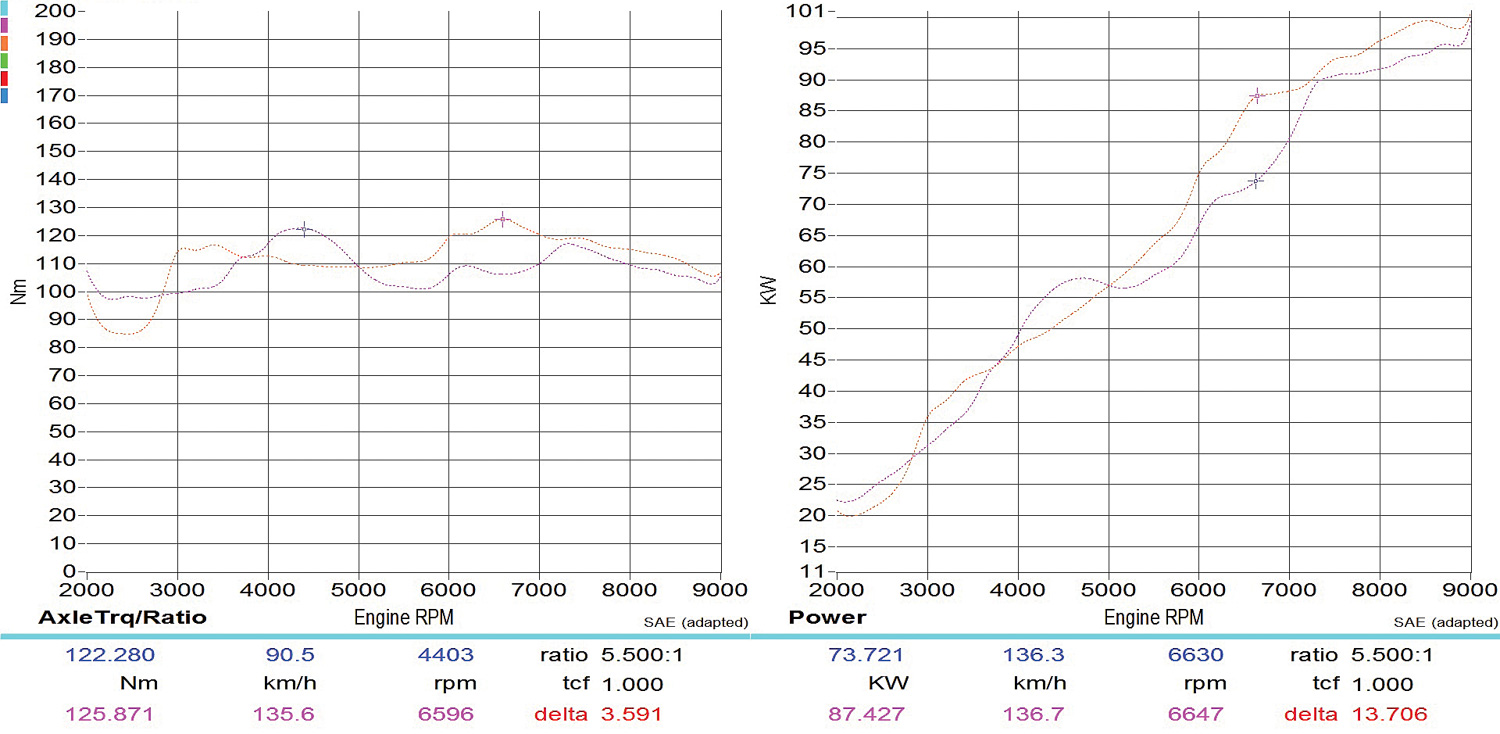
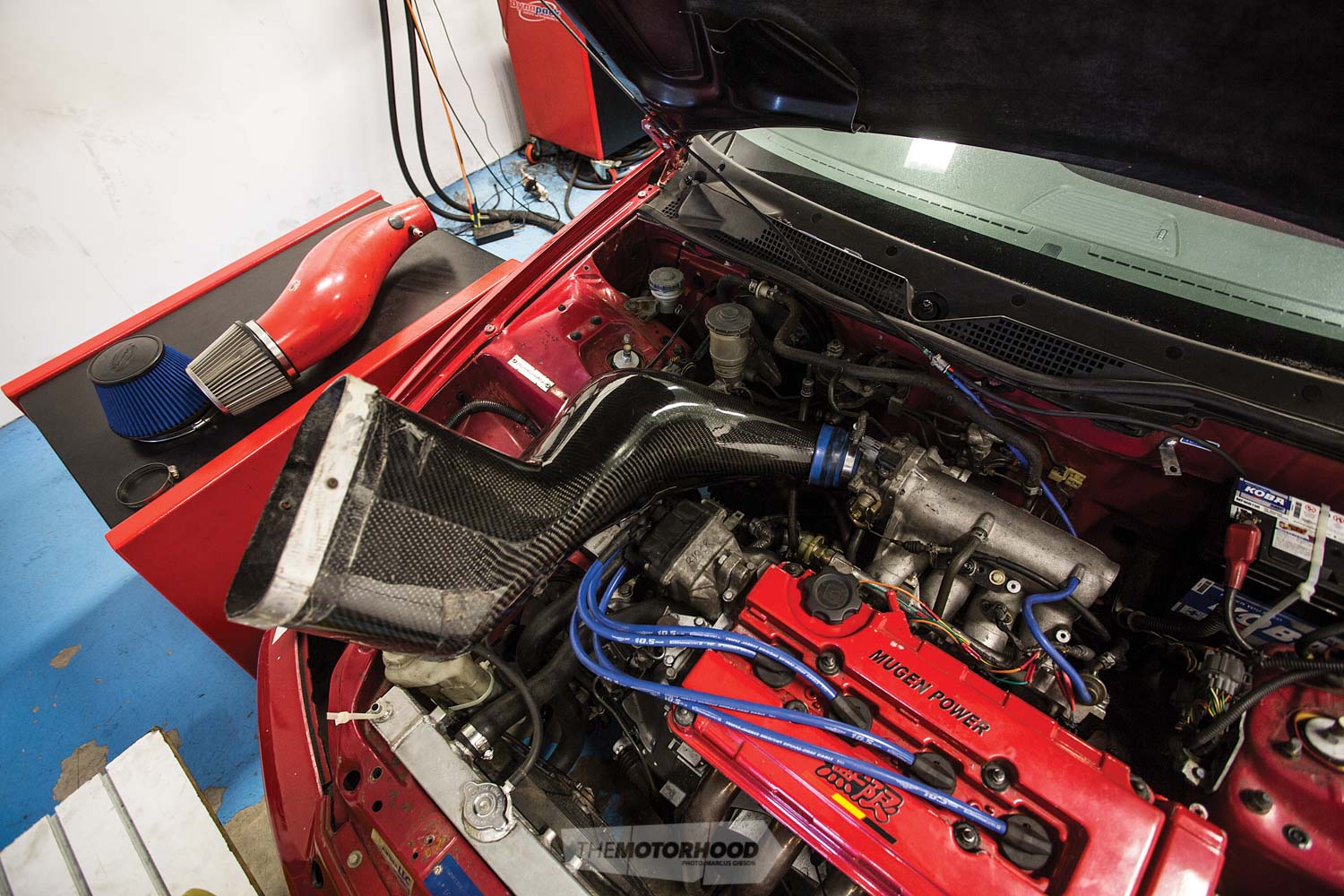
Test Six:
Money-can’t-buy N1 touring-car ram intake
105.22kW/120.09Nm at 719rpm
“Comparing this to the short ram intake, you can see the power band and the torque curve come on earlier. But, due to the length and volume, air speed is average, and therefore some areas have average gains. This is the best peak power so far, and, with air ramping into it, it will be even better.”
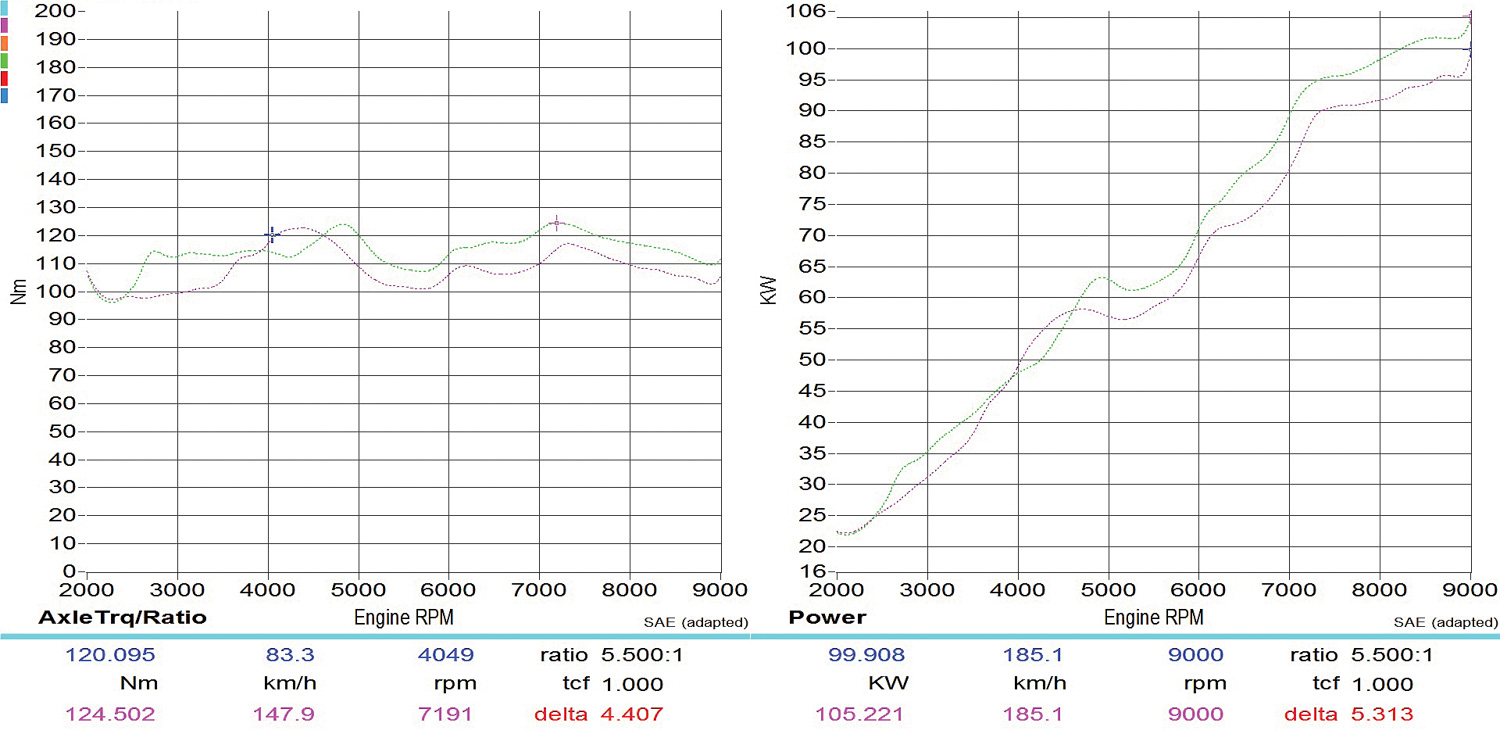
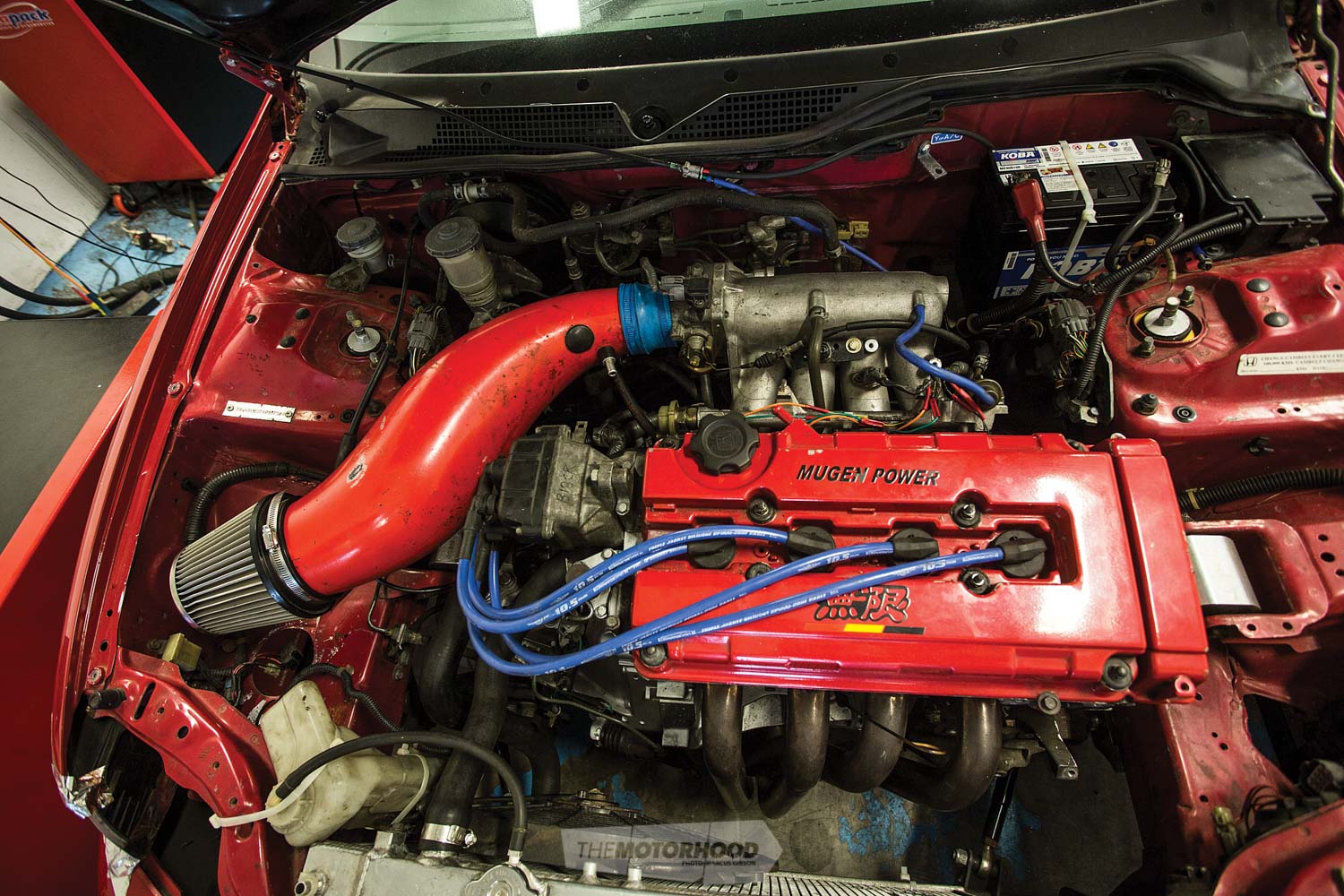
Test Seven:
Honda boy ‘Whale Penis’
102.79kW/121.98Nm at 6406rpm
“The design of the whale penis will work most times for a Honda B Series, as the length and volume are near perfect. The distance from the valve to the opening is almost perfect for most motors. You can see the difference in the mid-range torque — it really picked up. It makes really good torque down low compared to most of the other intakes.”
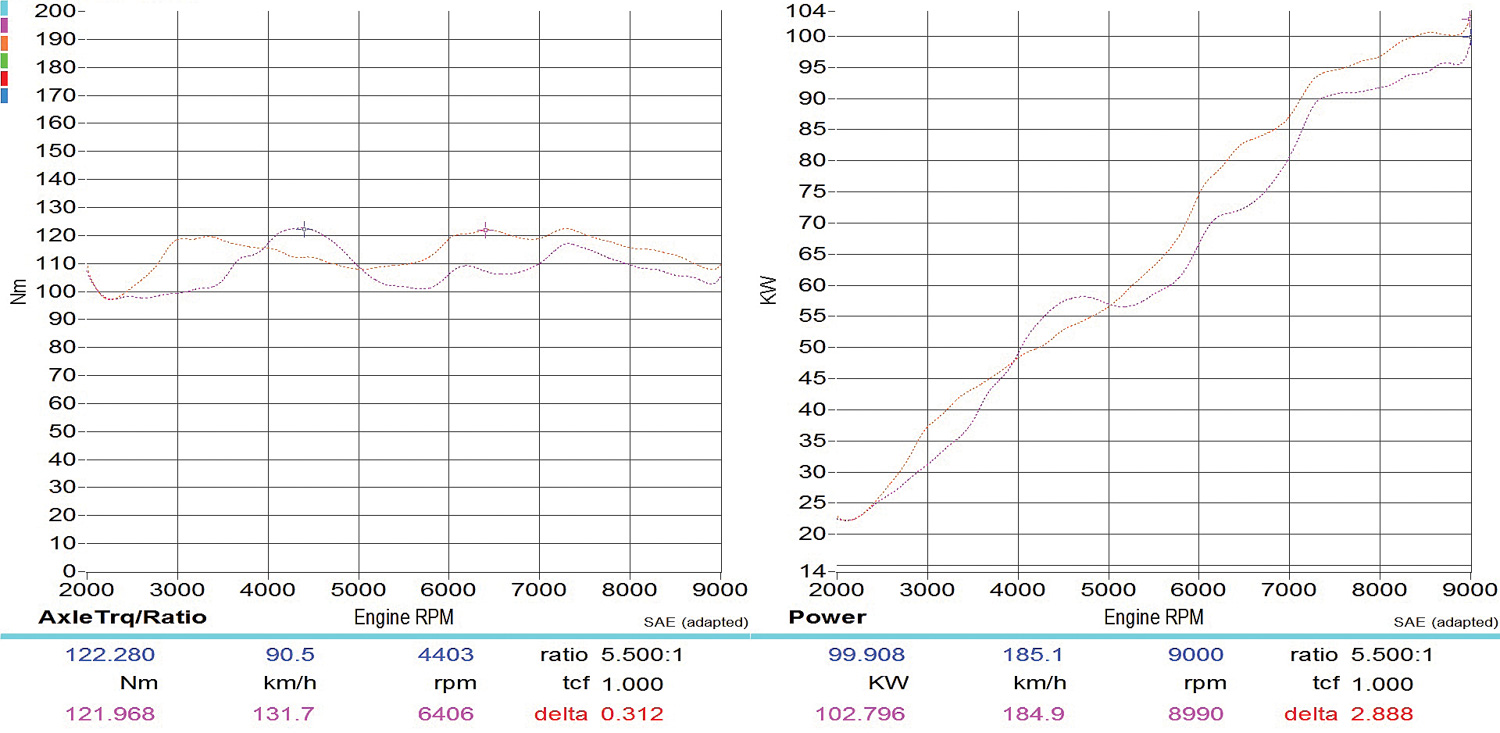
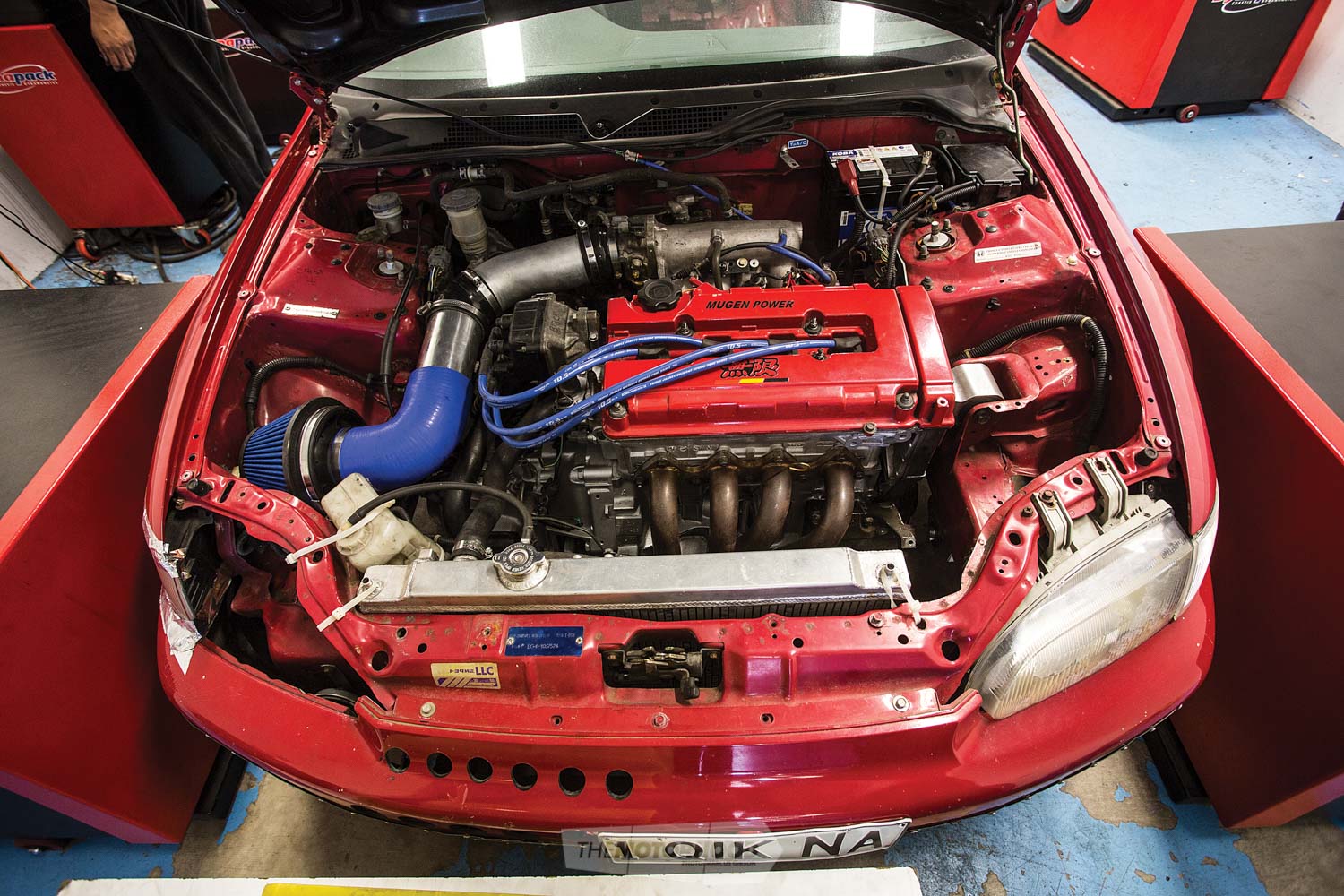
Test Eight:
long 3.5-inch intake with pod filter
103.98kW/122.28Nm at 4403rpm
“This is a very good sample. Compared to the N1 intake, torque and power come in later, similar to the short ramp intake, but it does not drop out at peak.”
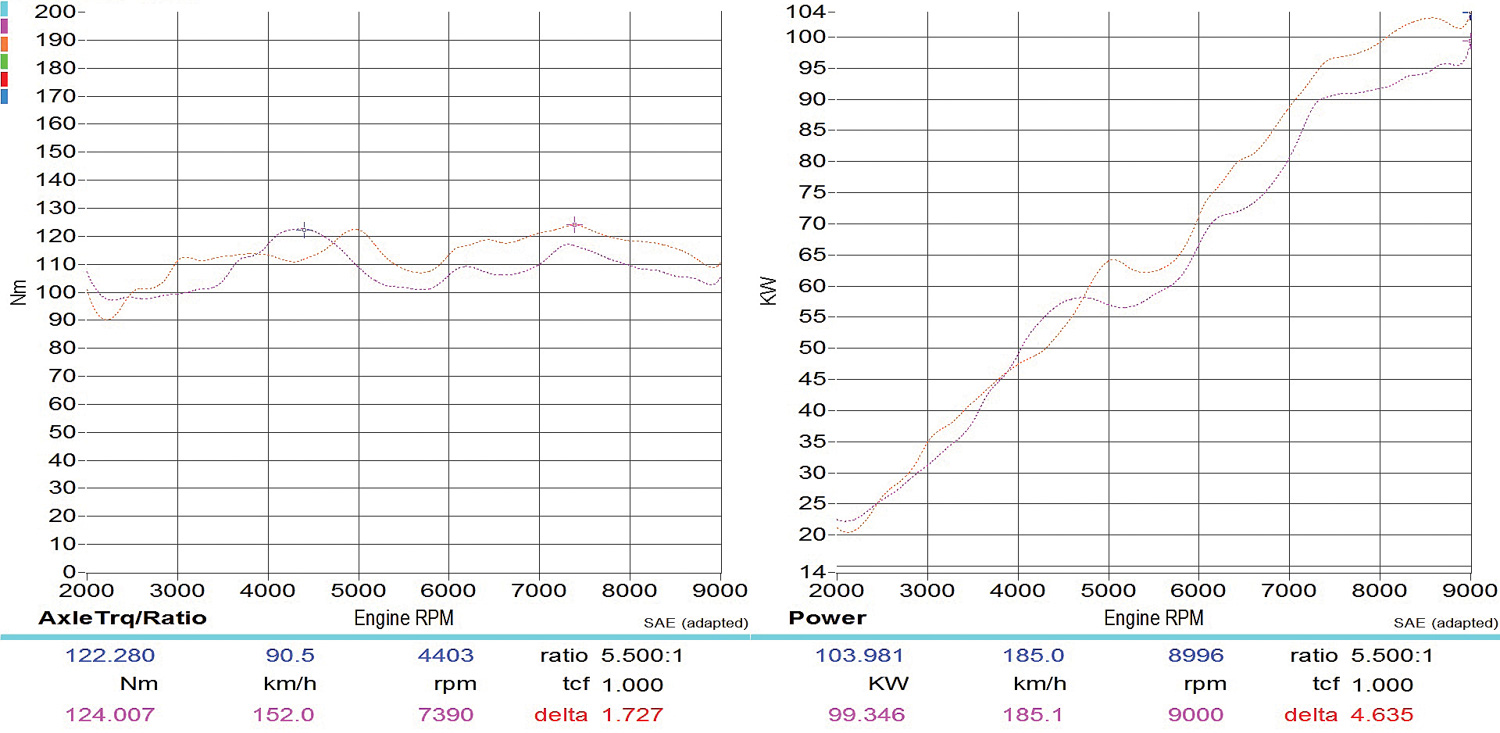
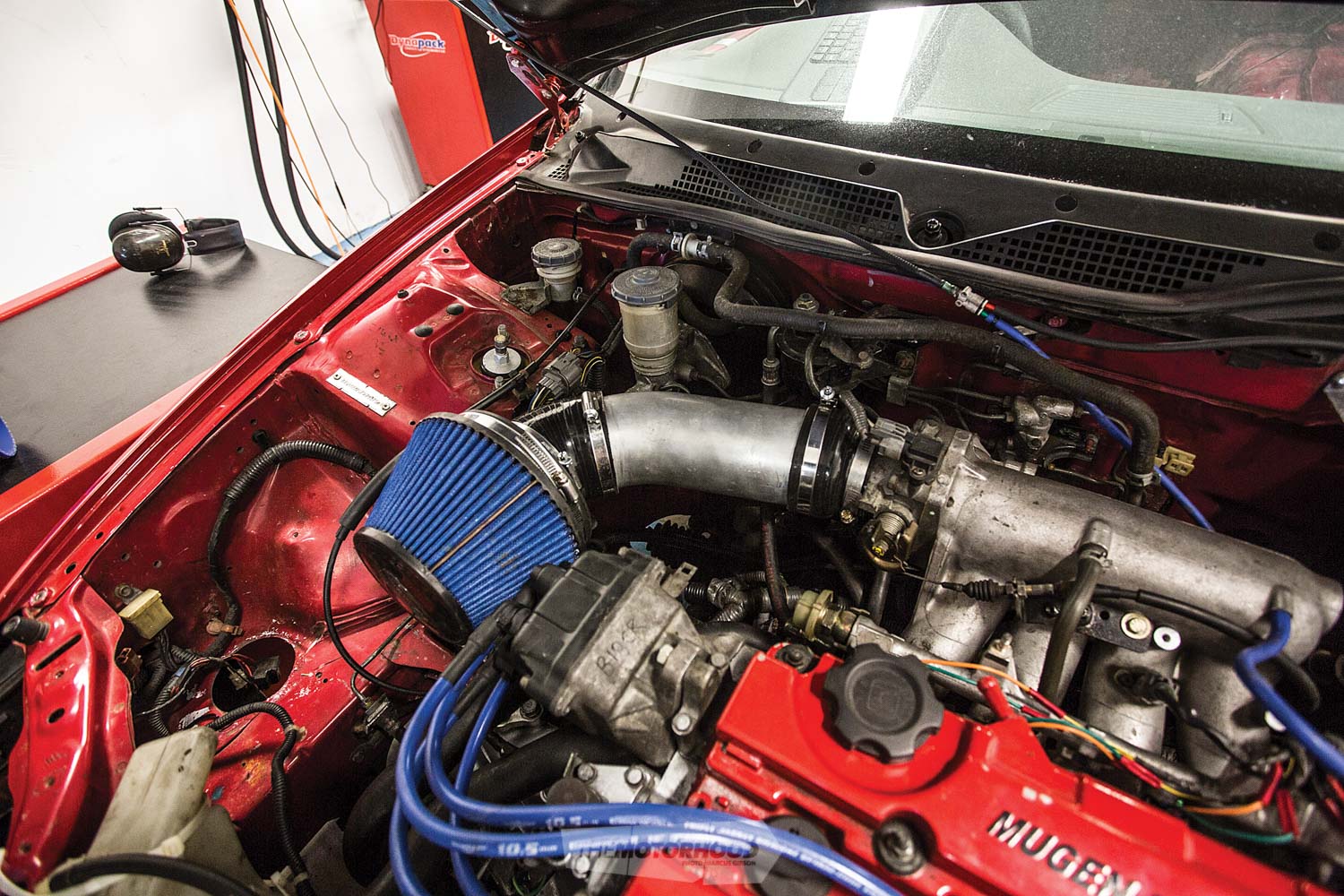
Test Nine:
Stubbie 3.5-inch with pod
104kW/127Nm at 6250rpm
“This is the best intake for our application. It not only makes the best peak power and torque, but the power band is [also] a lot fatter. Our biggest power gain was at 6500rpm, and max torque gain of 19Nm was at 6200rpm. For the best launch, we will want to launch at around 6200rpm, if it’s perfect track conditions. We will stage the car at round 8000rpm, track-condition dependant.”
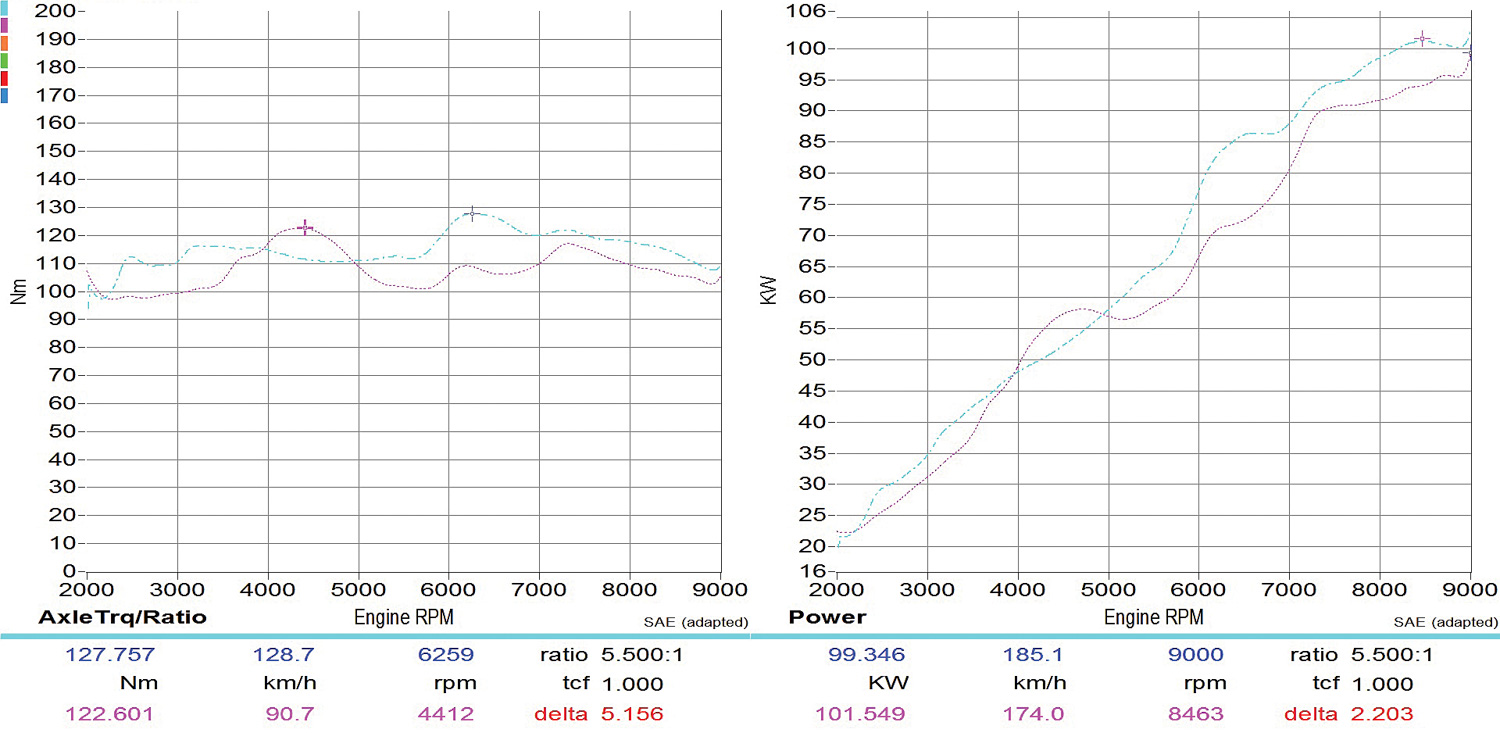
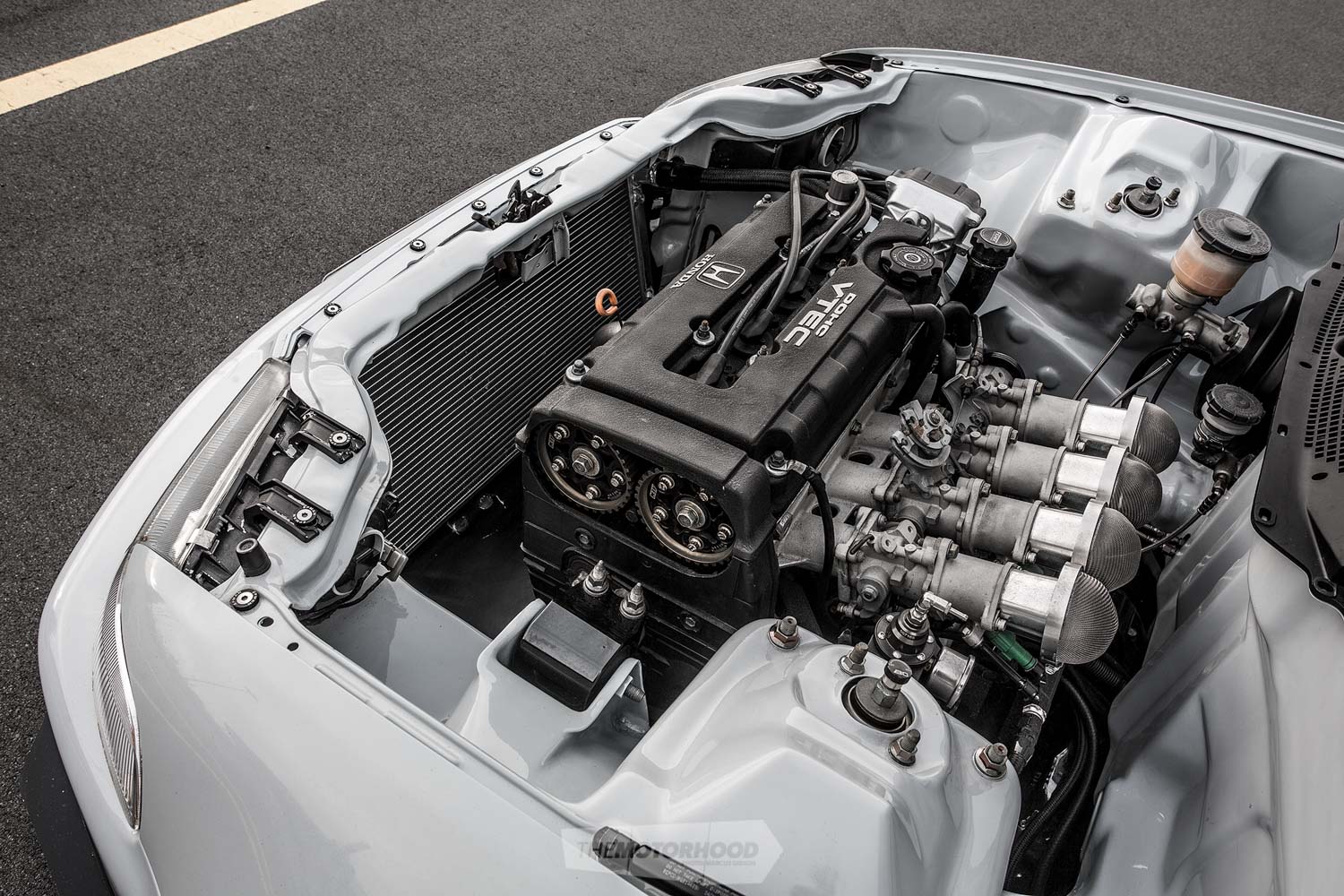
What about with ITBs?
“With a 4A-GE equipped with the ITBs [individual throttle bodies] found in the AE101/101 Levin, the factory chamber and airbox play a big part in terms of its low-end power and pickup; with the box removed and running open trumpets, all the low-down response and torque just disappear! There are slight gains higher in the rev range, but the motor needs to build air speed before it starts to sing. Cars with ITBs really need close-ratio gear kits to perform well, because the engine needs to stay high in the rev range. Even closing the throttle a small amount will affect the next gear; in most cases, you try not to close the throttle fully.”
This article originally appeared in NZ Performance Car issue No. 254 — you can get your grubby mitts on a copy by clicking the cover below:






